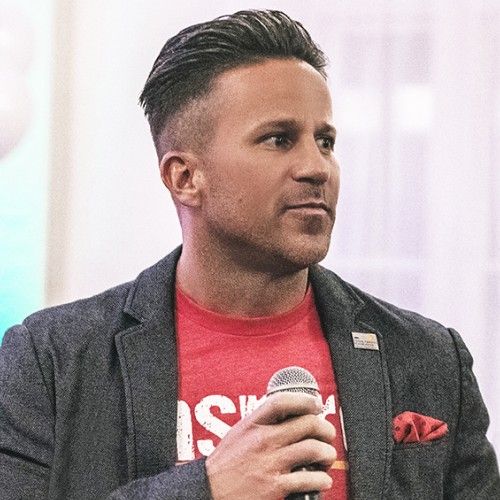Managers play an important role in their teams, serving as a leader and guide. While managers' involvement in projects can promote growth for their team members, constantly overseeing team members and micromanaging them can lead to direct reports feeling untrusted and unsupported. Leaders with micromanaging behaviors often have good intentions, but stifle productivity through ineffective leadership styles.
When dealing with a micromanager, it’s challenging to determine how to navigate the situation. While it may seem uncomfortable, addressing concerns to the micromanaging manager in a professional manner is the best way to promote positive change. Working under a micromanager is exhausting and causes the entire team’s morale to suffer. Communicating the negative implications of micromanaging and working to develop a solution will overall create a better team dynamic.
Micromanagers typically don’t recognize that they are exhibiting these traits within their teams which is why it must be addressed through a conversation. While it may be intimidating to address a manager about their negative behaviors, their actions are majorly impacting the team. Micromanaging is making the work environment miserable for the whole team, and if unaddressed, will force the team to continue to suffer. Since micromanaging is already causing so much harm to the team environment, having a conversation has the potential to majorly improve the managers’ behaviors.
Understanding the Cause of Micromanaging
Micromanaging is a pattern of behaviors that often stems from fear of failure and lack of trust of other members of the team. Managers have a lot of responsibilities, and the excessive pressure can cause them to be particular and overbearing on their direct reports. While micromanaging isn’t a positive solution, it is important to recognize that these behaviors originate from wanting the team to succeed. Lacking trust is another main cause of micromanagement. If a manager doesn’t have established trust with their direct reports, they may be compelled to become overly involved in their assignments. Since the team’s work is the responsibility of the manager, they may want more frequent and detailed communication because they want to ensure a successful end result.
While there are various reasons a manager micromanages their team, recognizing the cause of these actions is a critical step in addressing the issue. Going into a conversation with the mindset that a manager is terrible because they are micromanaging isn’t a productive way of thinking. Since managers often exhibit micromanaging behaviors due to their desire for the team to succeed, it’s important to enter the conversation with the intent to adjust their behaviors for the mutual goal of supporting the team.
Strategies for Addressing a Micromanager
- Describe the Effect on the Team
Everyone on the team wants the team to succeed. With this common goal in mind of supporting the team, describe how this managing style is an obstacle to the team’s progress. Discussing different implications of their behaviors, such as how the team must sacrifice limited work time to constantly communicate updates with their manager rather than making progress on their assignments, can help a manager better understand the real impacts the micromanaging is having.
When addressing the behaviors, make sure to utilize ‘I’ statements rather than ‘you’ statements. By discussing the personal impacts of their actions, a manager is less likely to feel attacked and be on the defensive. Using such statements opens the conversation up to be more collaborative. Owning the personal effects of their behavior rather than blaming the manager, communicates concerns in a way that promotes positive problem-solving.
2. Establish Trust
Since a lack of trust can cause micromanaging, working to develop a stronger working relationship with the micromanaging manager can establish more trust. During the conversation, collaborate on a solution that can encourage more autonomous work, while still allowing the manager to feel updated. For example, scheduling weekly meetings to share progress can alleviate hovering while working on assignments. Working together to devise a strategy that balances each other's needs, can begin to establish a foundation of trust.
Managers may also lack trust because they aren’t confident in the abilities of their team members. Utilize this conversation as a moment to solicit feedback about areas of improvement. Working to develop skills can allow a manager to be more confident when assigning tasks and be less compelled to constantly check in. Establishing credibility through a stronger skill set will ultimately continue to create a more trusting relationship and minimize micromanaging behaviors.
3. Provide Specific Expectations
As discussed, this conversation should include specific examples of instances when micromanaging behaviors are negatively impacting the team. Not only should the conversation address specific concerns, but a focus should also be placed on providing solutions. Collaborating to derive specific methods that the manager can adjust their behavior to better support the team will create a solid action plan. Without tangible steps for them to implement, it can be difficult to have an actual change going forward.
4. Suggest Accountability Tools
Another topic to discuss during this conversation is accountability tools. Scheduling meetings to revisit this conversation and collaboratively evaluate progress over time can also ensure accountability. Additionally, considering performance management tools for the manager to implement can work to reduce micromanaging behaviors. Tools such as AIM Insights can allow managers to better gauge their direct reports' performance without hovering over their work. Considering alternative creative approaches is a productive way to conduct this conversation with a micromanaging manager.
Oftentimes managers are unaware of their micromanaging behaviors. As a direct report, it can be intimidating to address these behaviors, but it's important to remember that the issues will persist if undressed. When conducting this conversion, focus on giving specific ways these actions are harming the team, establish a trusting relationship, devise ways these behaviors can be adjusted, and collaborate on accountability tools to ensure tangible changes are made.




































































